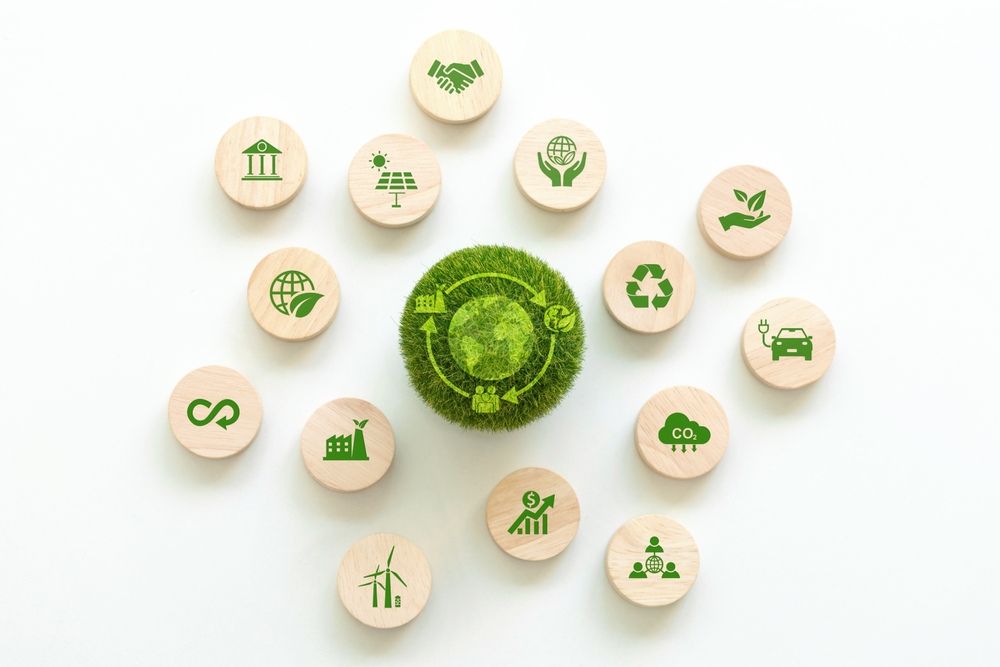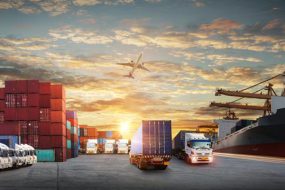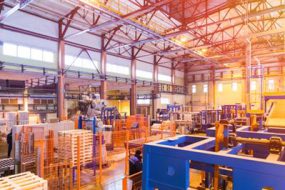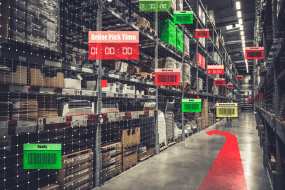

Sustainability has become a significant focus for businesses and governments alike. Many consumers advocate for changes in corporate practice, prompting legislative measures to improve environmental standards. A key area of emphasis is supply chains, recognised as a major contributor to environmental damage. In response to the 2030 Sustainable Development Goals set by the UN, there is an observable trend toward green supply chains, particularly within the logistics sector.
What is a green supply chain?
A green supply chain ensures that every part of the process—from raw materials to final delivery—uses eco-friendly practices. This includes reducing energy use, minimising waste, and turning to renewable resources whenever possible. Companies implementing these changes reduce their carbon footprint, frequently save money, and pave the way for a sustainable and profitable future.
Why green supply chains matter now more than ever
Green supply chains are good for business. They reduce waste, help companies cut costs, and improve their reputation. A study from Stanford Business School found that more than half of companies globally—around 51%—have a sustainable procurement policy. Furthermore, that number is expected to rise. The pressure for companies to adopt green practices is growing. Many of these organisations are already taking steps to achieve cleaner operations to comply with regulations and satisfy eco-conscious customers.
Related article: Reduce Emissions, Gain Profits: The Logistics Energy Transition
Key components of a green supply chain
Switching to a green supply chain is more complex than swapping plastic bags for paper ones and calling it a day. It requires a significant shift across several key areas:
Sustainable sourcing
Sustainable sourcing focuses on using materials that originate from responsible sources. For example, the fashion industry is moving away from synthetic fabrics and embracing organic cotton and recycled polyester. Sustainable sourcing aims to minimise environmental impact by selecting renewable or recycled materials and ensuring that resources are used sustainably.
Energy-efficient transport
Transport has long been one of the most significant contributors to carbon emissions. But that’s changing. Freight forwarding companiesare adopting electric vehicles, optimising routes to use less fuel, and making logistics more efficient overall.
Eco-friendly packaging
Packaging waste is a significant problem, but businesses are actively seeking solutions. Innovative packaging methods, such as using biodegradable or recyclable materials and optimising distribution processes, reduce packaging waste, benefiting everyone.
Waste reduction
Waste reduction is a key principle of green supply chains, emphasising the importance of minimising waste at every stage of production and distribution. By actively recycling and repurposing materials, companies contribute to environmental sustainability and find significant savings in operational costs. This approach allows businesses to transform what would otherwise be discarded into valuable resources, fostering a more efficient and eco-friendly manufacturing process while simultaneously promoting their commitment to the planet.
Related article: Sustainable Logistics: A guide to the circular economy
Why businesses need green supply chains
Switching to green practices offers benefits beyond just helping the environment:
Protecting the planet
Green supply chains help reduce greenhouse gas emissions and waste and conserve natural resources. Every effort matters in the global fight against climate change.
Cutting costs
Sustainable practices benefit the planet and the bottom line. Businesses that use less energy and produce less waste can save money on operations and enhance overall efficiency.
Building customer loyalty
Consumers are more likely to be loyal to brands that demonstrate they care about sustainability. Many people are willing to pay more for products with a transparent, eco-friendly supply chain. Companies that make it clear they are taking action to protect the planet often win customer loyalty—and sometimes even open up new markets.
Supporting local communities
Sourcing materials locally reduces transportation carbon footprint and supports local economies. Companies that take this step often become involved in community projects, creating lasting and mutually beneficial relationships.
New opportunities
There is a growing market for sustainable products, and companies with eco-friendly supply chains are well-positioned to seize these new opportunities. Leading the way in sustainability can provide businesses with a competitive advantage.
Driving innovation
Going green pushes businesses to think outside the box. Green supply chains encourage fresh ideas and innovation, whether product design or logistics.
The challenges of going green (and how to overcome them)
Transitioning to a green supply chain comes with its challenges, but here’s how to overcome them:
High upfront costs
Investing in sustainable technology can be expensive at first. However, over time, the cost savings and improved efficiency often pay off, making that initial investment worth it.
Resistance to change
Some suppliers or partners may be hesitant, particularly if they have concerns about costs or complexities. However, businesses that take the initiative and showcase the advantages of going green will eventually win over the sceptics.
Navigating regulations
Environmental regulations are constantly changing, and it can take time to keep up. For companies operating across multiple regions, the challenge is even more significant. That’s why partnering with a logistics expert is crucial. These experts can assist businesses in staying compliant and avoiding costly mistakes.
The future of green supply chains
As we look to the future, green supply chains will continue to evolve, with a few key trends leading the way:
AI and digitalisation
AI transforms everything from demand forecasting to inventory management, making supply chains more innovative and efficient. This is particularly impactful in freight forwarding operations, as AI-powered routing can significantly cut carbon emissions across global shipping networks.
Blockchain for transparency
Blockchain technology ensures accountability at each stage of the supply chain, enabling stakeholders to verify the authenticity and provenance of products quickly. As a result, it significantly reduces the potential for fraud, fostering trust among consumers and businesses while promoting ethical practices throughout the supply process.
Electric Vehicles (EVs)
The emergence of electric vehicles (EVs) is poised to significantly decrease the carbon footprint associated with global shipping and freight operations. This transition to cleaner transportation methods will foster more sustainable and environmentally friendly supply chains, ultimately reducing greenhouse gas emissions and promoting a healthier planet for future generations.
Key takeaway
As environmental regulations become stricter worldwide, companies are enhancing the sustainability of their supply chains to ensure uninterrupted operations. The global shift towards sustainability is evident, and businesses are adapting accordingly. This trend is noticeable in freight forwarding, where companies implement comprehensive environmental risk management policies. Additionally, those embracing sustainability gain improved access to capital through investments focused on Environmental, Social, and Governance (ESG) criteria, which helps them build resilience against disruptions caused by climate change. In today’s market, having green supply chains is essential for maintaining a competitive edge.
Aramex Logistics is already paving the way with its eco-friendly solutions. Contact us today to learn how we can help you build a supply chain that is as sustainable as it is efficient.




